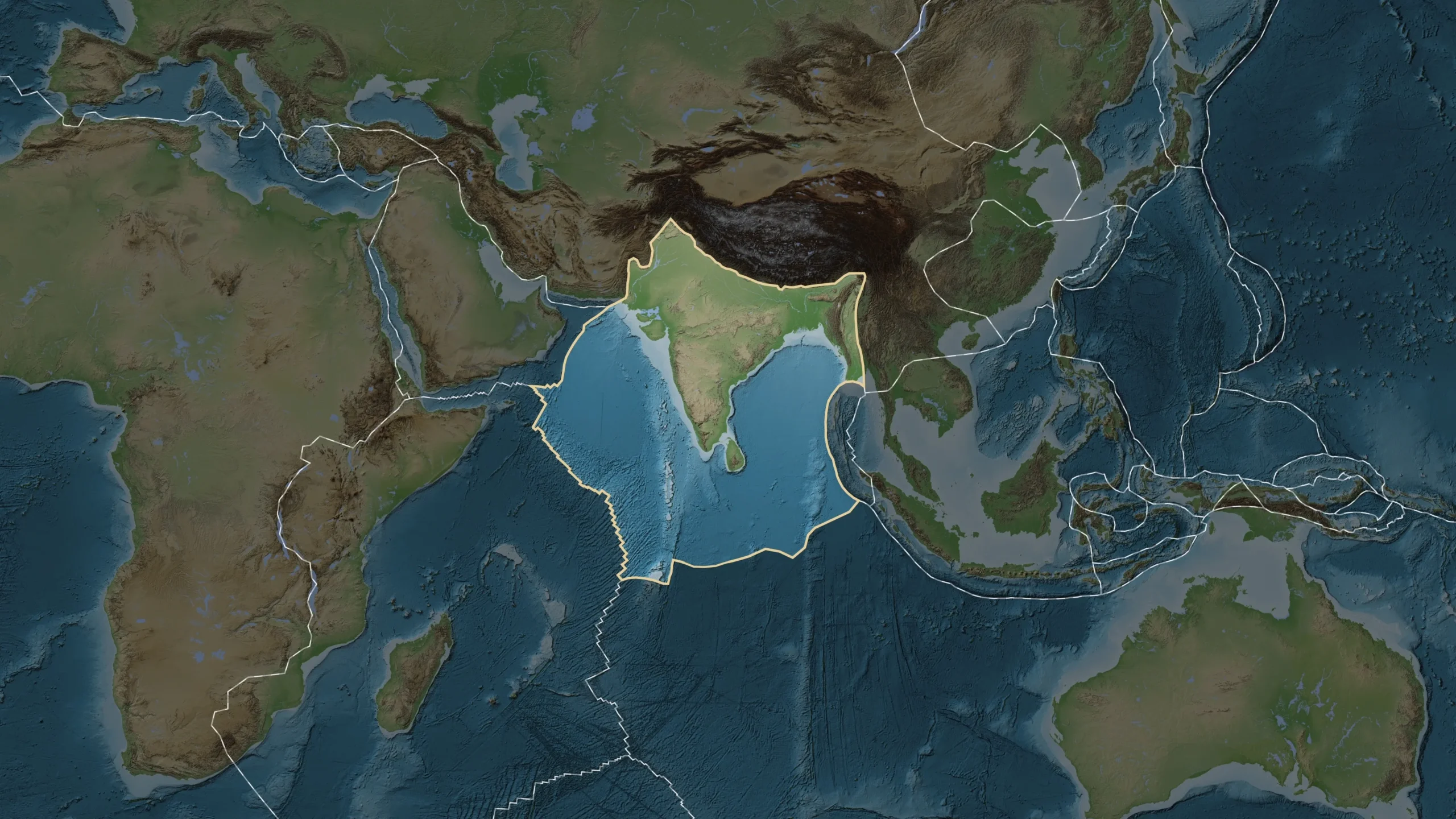Researchers recently unveiled new seismic data indicating that the Indian tectonic plate is splitting in two beneath the Tibetan plateau.
About Indian Tectonic Plate:
- It is a minor tectonic plate.
- It is bound by four major tectonic plates. North of the Indian plate is the Eurasian plate; to the south east is the Australian plate; to the south-west is the African plate; and to the west is the Arabian plate.
- As the Indian plate moves northward relative to the Eurasian plate and collides with it, a convergent boundary is created.
- On the opposite side, the Indo-African boundary is divergent.
- The western Indo-Arabian boundary is lateral relative to each other, giving rise to a transform boundary.
- It was previously thought that the Indian and Australian plates formed one single plate as there is no clear type of boundary but recent seismologic evidence suggests that the two plates will have a transform boundary, as the drift velocities of these two plates are different even if the general direction of motion of the two plates is similar.
- The collision of the Indian plate with the Eurasian plate about 50 million years ago resulted in the erection of the Himalayan Mountains.
- As the Indian plate is still active today and drifts at a velocity of about 5 cm per year, earthquakes occur in the northern part of the plate.




